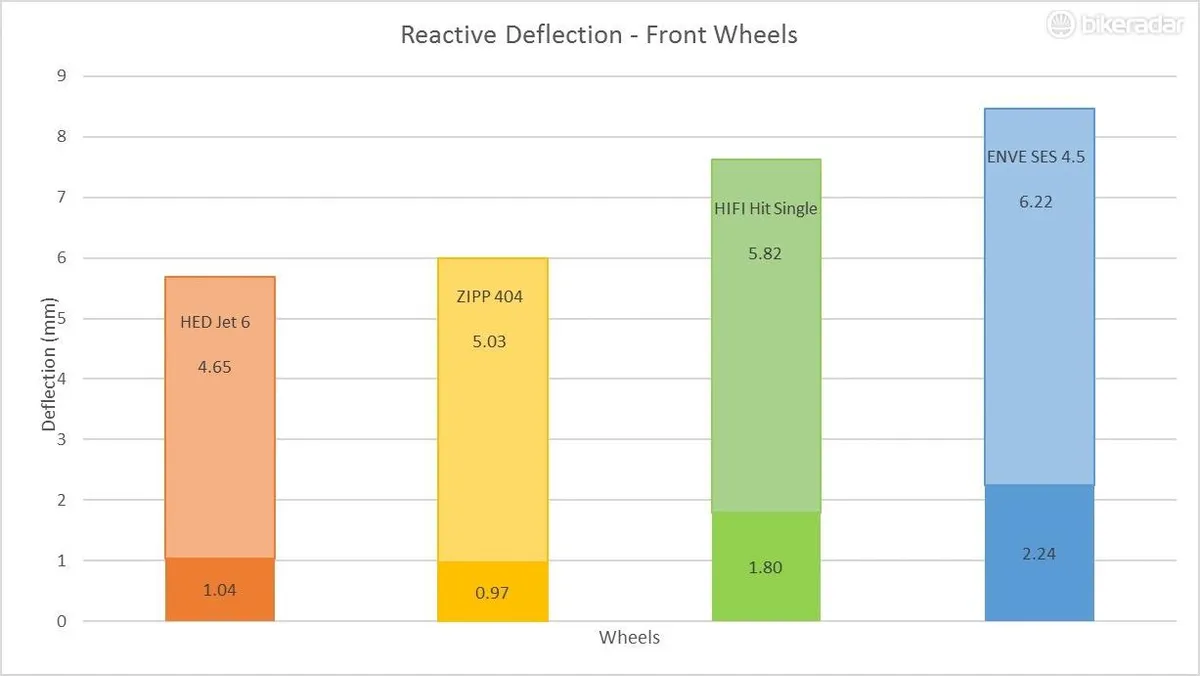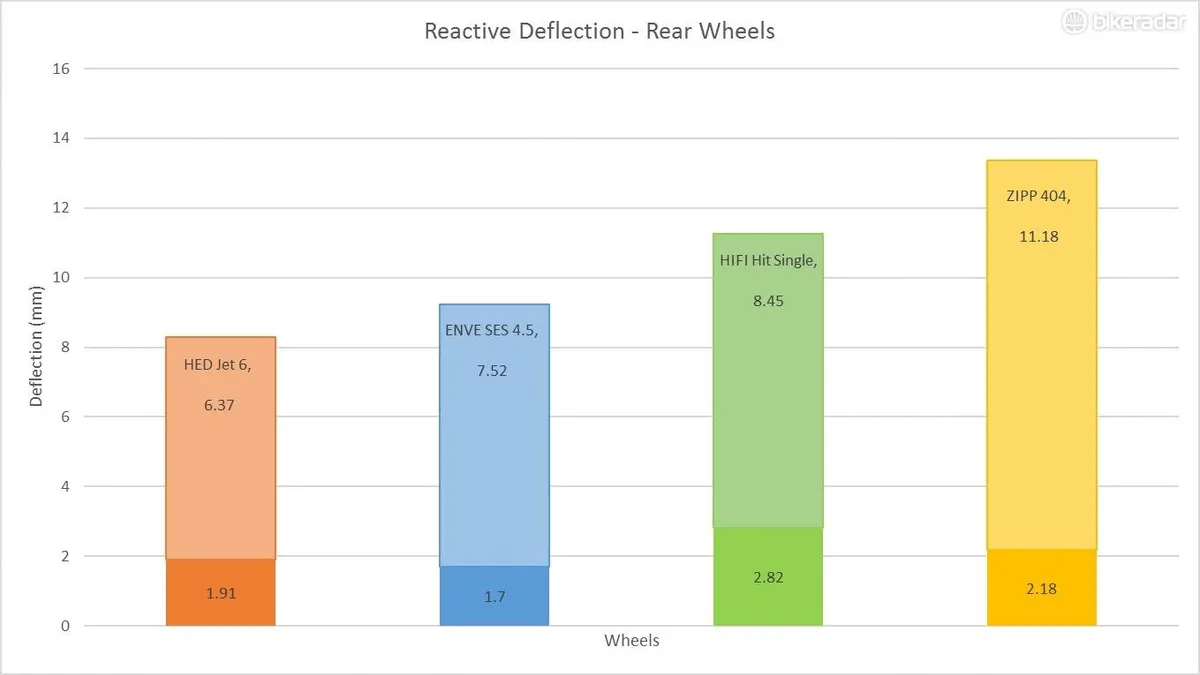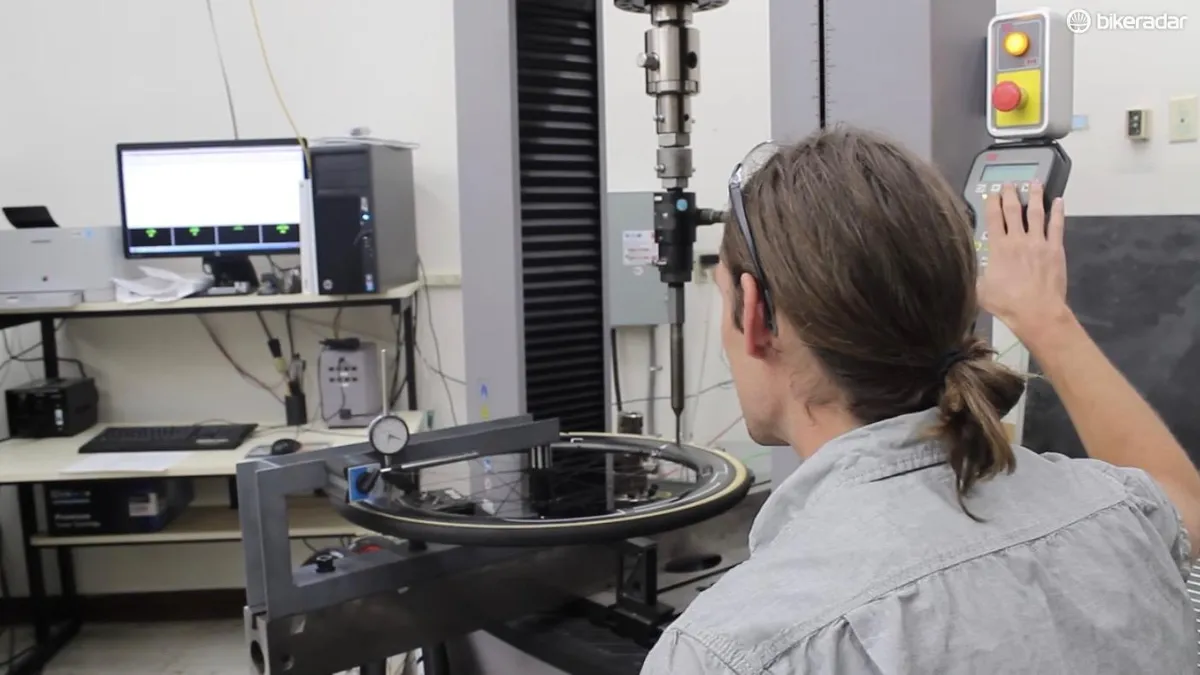Do you like your brake pads to rub your wheels when you’re out of the saddle? Me neither. But what causes it? Is it deflection of the wheels or the frame?
We tested four wheels and two frames to see what causes brake rub
Often when I ask companies, I get deflection of a different kind: wheel companies point the to frames, and the frame companies point to the wheels.
To try to get a quantitative understanding, I took four aero wheelsets and two frames to Microbac, a testing lab here in Boulder, Colorado.
Measuring lateral deflection of wheels
Microbac engineer Richie Trent worked with me on tests for the wheels and the frames.
The lab already had one wheel deflection test, where a controlled load of 56lb / 25.4kg is applied laterally to the wheel at the brake track, and movement is measured at that point. (VeloNews uses this method for some of its wheel tests.)
I asked Richie to test that way, and then to also measure deflection on the opposite side of the wheel. My thinking was this: if a load is coming from the ground, I want to know how much deflection is being caused on the other side of the wheel as it is passing through the brake calipers.
Why 56 pounds? Microbac uses that load, converted from the metric 250 Newtons (which is a force), because that is what is specified by the ISO test method for wheel deflection.

I don’t know how exactly to break down the division of a vertical load (which is most of the equation, almost all of the time) versus the lateral load when you're riding a bike. But as Microbac manger Russ Willacker pointed out, “at no point is 100% of your weight loading the bike laterally, or you’d be on the ground.”
So, a 56lb lateral load, especially when you consider that you have two wheels dividing your body weight, is pretty extreme.
In any event, Microbac tested both front and rear wheels at the point of load application and at the other side of the wheel from the load.
I asked Richie to test four aero wheelsets with similar rim depths: an ENVE 4.5, a HED Jet 6 Black, a Zipp 404 Firecrest and a Hit Single from HiFi, a relatively new consumer-direct wheel brand out of Portland, Oregon.
Here is how the front wheels did.

Note that each wheel has two measurements – the larger number is the deflection at the load point. The smaller number is the deflection at the opposite side of the wheel. So the HED and the Zipp front wheels moved about a millimeter under a 56-pound load, while the HiFi and ENVE front wheels moved close to 2 millimeters.
For reference, the distance from the brake track to a brake pad on an average road bike is about 2 millimeters. Of course you can tweak this in or out based on you personal contact-point preference, which is one of the beauties of rim-brake bikes — and you can do this on the fly. I’ve seen many pros like Alberto Contador open their calipers with the quick release at the base of a steep climb, when they will be out of the saddle and really torqueing the bike side to side, then tighten them for the descent.
And here is how the rear wheels did.

Again, there are two numbers for each wheel: the larger number is the deflection at the load point. The smaller number is what we’re interested in regarding potential brake rub. Note that there isn’t always a fixed correlation between deflection at the load point and deflection at the brake caliper. This means that – even if you have highly calibrated hands – simply wiggling a wheel by hand in a frame to test stiffness won’t necessarily tell you much about brake rub.
Another interesting thing to note: while the Zipp, ENVE and HiFi are all carbon clinchers with structural aero rims, the HED is basically a box-section alloy rim with a flexible carbon fairing. So it has longer spokes. I found it fascinating that this wheelset moved the least laterally (averaging the front and the rear), as it is also the most comfortable wheelset of the bunch. I would have guessed it would have been among the most flexible laterally. This is why we test!

Measuring lateral deflection of frames
I brought Microbac a Specialized Tarmac that I love for all-around riding, and an older Scott Foil that I often race on.
Richie tested these with the same 56lb load, but here that load was added to an inflexible steel bar that replicated the world’s stiffest wheel. Richie fixed that bar into the dropouts, pointing it towards the rim caliper, and then added the load right next to the caliper. The idea being – same lateral load, same area – just testing the frame, via dropout stiffness, instead of a wheel.

The Scott Foil showed a deflection of 1.77mm. The Specialized Tarmac moved 2.67mm.
I was pleased to see that my feeling on the Foil being stiffer bore out in actual testing.
Conclusions, musings and a couple of suggestions
So, when you’re getting brake rub, is it the wheels or the frame? Well, chances are, it’s a little of both.
These two frames and four wheelsets are obviously a very small sampling of what is out there. But I thought it would be interesting to measure this little group of products, and I hope the results are interesting for you, too.
A number of experts I talked to suggested that deep carbon rims are more likely to give you brake rub as the very stiff rims can transmit a load more effectively than a shallow alloy rim, which will tend to deflect more locally. Of course, the particulars of any wheel build (spoke count, spoke tension, hub configuration, etc.) determine its characteristics, but this was a common generalization I heard.
Keep in mind that these deflection numbers represent 56 pounds of force applied perpendicular to the bike – a force you’d only likely see in the real world when really rocking the bike side to side with some aggressive torque.

If you are getting annoyed with brake rub, try experimenting with other wheel sets – swap wheels with a friend, for example. Just make sure that the distance between the rim and the brake pad is the same each time.
And remember, with rim-brake wheels, you can always adjust this on the fly if you need to, before a climb or before a sprint, with a quick flick of the caliper’s quick release. Just remember to set it back afterwards!
